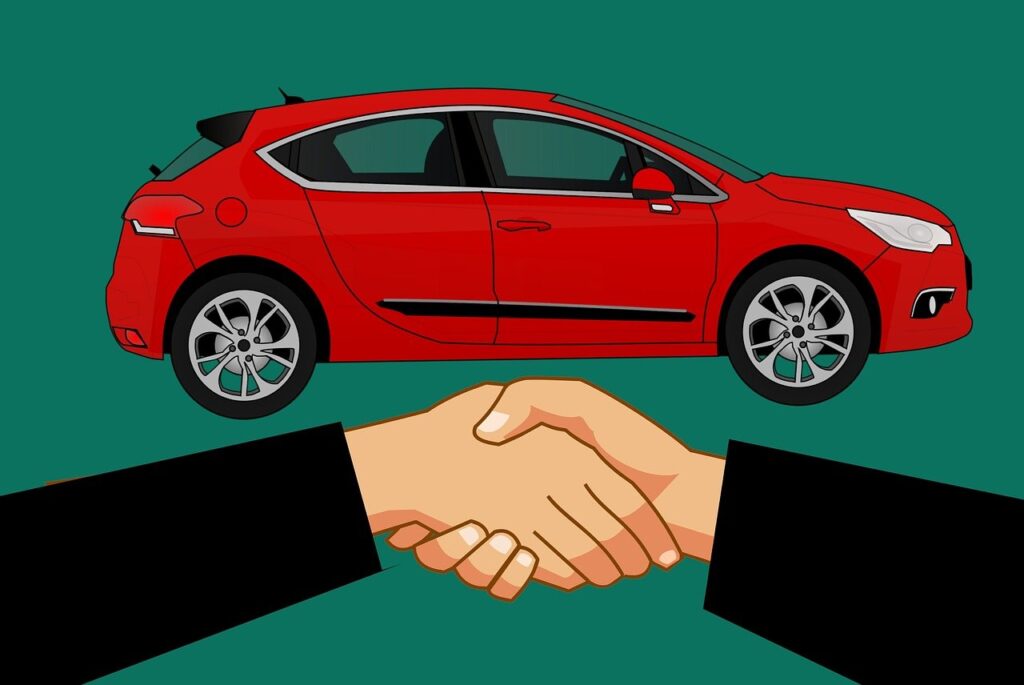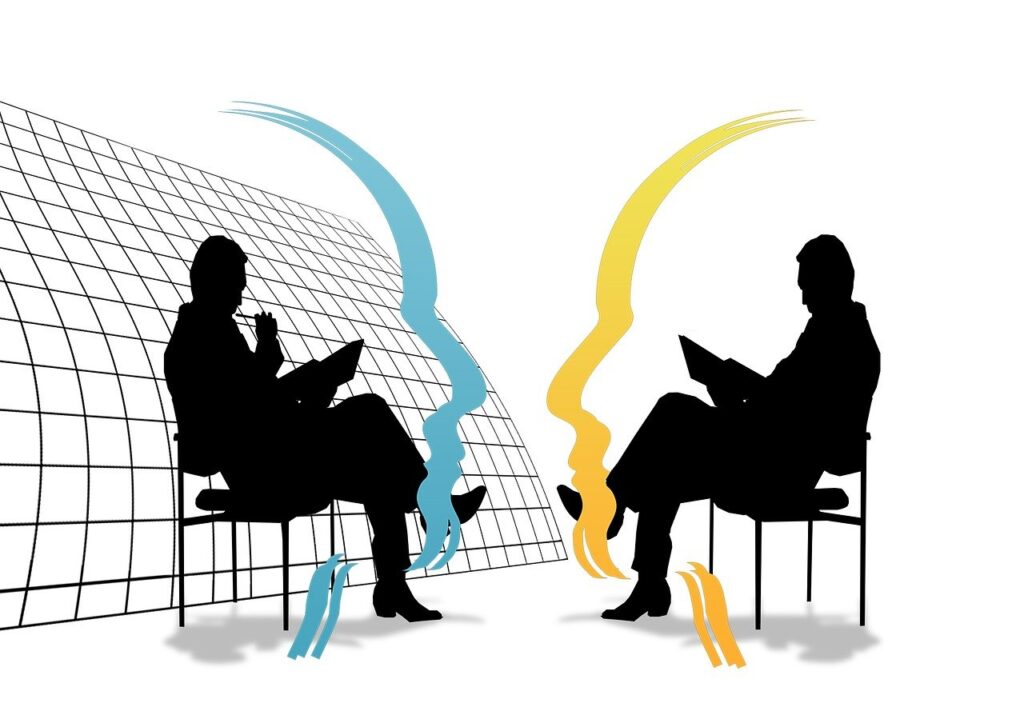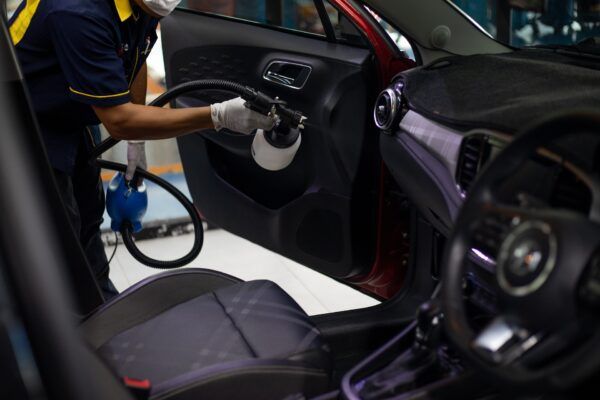
For many of us, buying a new car is one of the most significant financial decisions we’ll make. It’s a process that can feel like a daunting dance, a time-honored tradition of back-and-forth that, depending on your perspective, is either exhilarating or simply something to be endured. But here’s the empowering truth: mastering the art of car negotiation can potentially shave thousands off the price of a new vehicle, transforming a potentially stressful experience into a triumphant one.
Far from being a passive participant, you hold immense power as a car buyer. The key to unlocking that power lies in thorough preparation. In the digital age, a wealth of information is at your fingertips, making it easier than ever to do your homework before even stepping foot in a dealership. This proactive approach will pay dividends when it’s time to talk dollars and cents, ensuring you feel confident, comfortable, and in control of the process.
This comprehensive guide will equip you with 14 essential strategies, broken down into two powerful sections, to navigate the car-buying landscape like a seasoned pro. We’ll dive deep into the actionable steps you can take to secure the best price on the car you truly want, starting with the crucial groundwork you need to lay before any serious talks begin. Let’s get ready to supercharge your savings and drive home a deal you’ll be proud of.

1. **Research Car Deals and Manufacturer Offers**It might seem like stating the obvious, but one of the most effective ways to negotiate for a car that perfectly fits within your budget is to begin with a lower price tag right from the start. Fortunately, almost every car manufacturer consistently rolls out special offers on a diverse array of models each month. These aren’t just for sedans; they include popular vehicles like EVs, SUVs, and trucks, ensuring there’s usually a deal to be found for nearly any preference.
These promotional deals often cover both leases and financing options, sometimes even bundling in cash-back incentives and various bonus offers. While they might be tied to particular trim levels or vehicles equipped with specific options, if those happen to be the configurations you’re interested in, it’s simply smart to capitalize on these readily available savings. Missing out on these can mean leaving money on the table before you even start the haggle.
Beyond the regular monthly specials, keep a keen eye out for additional opportunities, such as special offers available over three-day holiday weekends. The context indicates that automaker incentive spending has seen a rebound, reaching about 6.7% of the average transaction price for new cars in spring 2025. While this is an increase from roughly 5% in 2023, it’s still lower than the 10% seen before the COVID-19 pandemic, signifying that incentives are back and worth pursuing.
When conducting your research, make sure to enter your ZIP code on manufacturers’ websites, as many offers are geographically based. Understanding these financing promotions and incentives is crucial, but remember a vital piece of advice: don’t let incentives solely dictate your purchase. There’s more to buying a vehicle than just securing a so-called good deal due to big discounts. The goal is a truly smart purchase, not just a flashy markdown.
Read more about: Navigating the 2025 Market: Edmunds’ Expert Guide to the 12 Best New Cars Under $30,000 for Savvy Buyers

2. **Utilize Online Configurators and Valuation Tools**Starting your new car search by visiting a manufacturer’s website and building the car of your dreams – and then, more realistically, the car that aligns with your budget – has become a standard and highly effective approach. This process isn’t just practical; it’s genuinely fun. You can select colors, different trim levels, and various options, adding and subtracting features as you thoughtfully narrow down your list of absolute must-haves and those desirable nice-to-haves.
Crucially, this online configurator tool allows you to clearly see the cost associated with each option. You can discern whether certain features are standard equipment that add no extra cost to the car, or if they are stand-alone options or part of a larger package. Possessing this detailed pricing knowledge empowers you significantly when the time comes to enter into negotiations with a dealer, giving you a firm understanding of what you’re actually paying for.
Beyond merely building your ideal car, another invaluable step is to tap into car valuation tools. Our sister site, Kelley Blue Book, offers a car valuation tool that can help you determine an estimated average price range for the vehicle that truly interests you. Having a good idea of a new or used car’s value in advance provides you with a concrete target price to aim for when you step onto the dealer’s lot, anchoring your expectations and bids in reality.
Furthermore, resources like Edmunds provide an “Edmunds Suggested Price,” formerly known as True Market Value, which is their recommendation for what you should pay, excluding taxes or fees. This price is derived from an intricate analysis of millions of data points, including supply, demand, incentives, available options, and recent transactions in your vicinity. For specific vehicles listed for sale, Edmunds features a price details section, rating the asking price as “great,” “good,” or “fair,” or indicating if it’s a high price, along with a figure showing how much above or below market the vehicle is. This serves as your fundamental basis for determining if you’re genuinely receiving a good price or if the quote is on the higher end of the spectrum. Keep in mind, however, that Edmunds’ suggested pricing represents an average; while your ultimate goal is to secure a price at or below it, a slightly higher offer might still be perfectly acceptable depending on the specific circumstances.
3. **Define and Stick to Your Realistic Budget**A new or even a used car is likely to be one of the most substantial purchases you’ll ever make. This is precisely why knowing what you can genuinely afford is not just important, it’s absolutely critical. Having a clear and firm budget acts as your shield, helping you resist the inevitable pressure to upgrade to a more expensive model or simply overpay for a vehicle that stretches your finances too thin.
Financial experts often recommend a practical guideline for car financing. Ideally, you should aim to put at least 20% down on a new car, and this down payment can certainly include the value of any trade-in you might have. Once you’ve used an online configurator to determine your desired car’s potential price, it’s wise to plug those numbers into an online car payment calculator. The overarching goal here is to establish a budget where your monthly car payments consume no more than 10% of your take-home pay, if at all possible. This mindful approach to budgeting is your first line of defense against financial strain.
Before you even consider contacting a dealership, it’s highly advisable to meticulously adjust your wish list. Figure out what features and specifications you truly need versus what would simply be nice to have. This internal negotiation with your desires ensures that your budget is aligned with your real-world requirements, preventing emotional decisions that could lead to buyer’s remorse later on. This discipline upfront translates into significant savings and peace of mind down the road.
Another helpful framework for budget planning is the “20/4/10” rule of thumb, suggested by some personal finance experts. This advises putting down 20% of the vehicle’s price, financing the purchase for no more than four years, and maintaining your total transportation costs—which include the loan payment, insurance, gas, and auto maintenance—below 10% of your monthly income. However, it’s crucial to recognize that every person’s financial situation is unique. Just because a formula suggests you can afford a certain amount doesn’t mean you absolutely must spend that much. Many individuals choose to allocate less to their cars, prioritizing other financial goals like paying down debt or bolstering savings accounts, while others might spend more on their automobiles because they forgo expensive vacations or frequent dining out. Ultimately, your budget should reflect your personal priorities and financial comfort, not just a theoretical maximum.
Read more about: 9 Overrated Car Brands: Unmasking the Truth About Reliability Problems and Sky-High Maintenance That Kill Value

4. **Investigate What Others Have Paid in Your Area**One of the most incredibly useful tools that the digital age has bestowed upon car shoppers is the remarkable ability to discover precisely what other buyers in your local area have recently paid for the exact same car you’re interested in. This isn’t just about curiosity; it’s about arming yourself with invaluable data that can profoundly influence your negotiation strategy.
To tap into this power, simply enter the specific trim level and desired options of the car into reputable sites like J.D. Power, or utilize programs such as the U.S. News Best Price Program. These platforms are designed to show you what real buyers have recently paid for that exact configuration. What you’ll likely encounter is a range of prices, providing a realistic spectrum of recent transactions. Your strategic move here is to aim to start your initial negotiation bid at the lower end of that range, giving you immediate leverage and a strong opening position.
This kind of detailed research isn’t just a suggestion; it’s a fundamental step in being a savvy shopper. Understanding the fair market value of the car you desire, based on actual sales data, provides a solid foundation for your bargaining. It helps you avoid overpaying and ensures your offers are grounded in current market realities, making your propositions to the dealer much more credible and difficult to dismiss.
Furthermore, for new vehicles, tools like the Edmunds price checker allow you to enter the specifics of any quote you’ve already obtained from a dealership. This tool then provides a rating, letting you know if that quote represents a “fair,” “good,” or even a “great deal.” This immediate feedback is incredibly empowering, confirming if you’re on the right track or signaling that you still have room to push for a better price. Leveraging such resources transforms you from an uninformed buyer into an empowered negotiator.
Read more about: Academic Integrity in the AI Age: How Olivia Dunne’s TikTok Ignited a Crucial University Debate

5. **Strategically Time Your Purchase**Did you know that there are objectively better times than others to buy a car? By scheduling your negotiation for these opportune moments, you can significantly enhance your potential for a favorable outcome. One of the most consistently beneficial times for negotiations is toward the end of the month. This is because salespeople and dealerships alike typically have monthly sales goals to meet. If they are just a few sales shy of reaching those targets, they often become much more flexible and willing to bend during negotiations to close a deal.
Building on this monthly rhythm, if you can manage to visit the dealership on a Monday, so much the better. Mondays are generally a calmer scene at dealerships compared to busy weekends. This reduced foot traffic means you’ll likely have more dedicated attention from a salesperson, allowing you ample time to negotiate with less pressure and fewer distractions. The unhurried environment often fosters a more constructive dialogue, leading to better results for you.
Just as the end of the month presents a prime window for negotiations, the end of the year offers another excellent opportunity. Dealerships also operate with annual sales goals, and as the year draws to a close, they might be willing to drop their prices even lower to hit those yearly targets. Additionally, keep a vigilant eye out for seasonal sales events and special promotions that often occur around national holidays. These periods are frequently characterized by increased incentives and a greater willingness to negotiate on the part of dealers.
Beyond monthly and annual targets, another factor influencing a dealer’s flexibility is inventory. The longer a specific car sits on a dealership lot, the more likely the dealer will be motivated to negotiate on its price, as holding onto inventory incurs costs. Conversely, if you’re eyeing popular models with highly sought-after features, especially if lean inventory persists for certain high-demand trims, these might be challenging to locate. In such cases, dealers can be less inclined to lower the price, as the demand itself justifies their asking. Understanding this supply and demand dynamic is key to timing your move.
Read more about: Inside the Lavish World of Lefty: Phil Mickelson’s Elite Garage and Unrivaled Collections

6. **Decide on Your Negotiation Method: Online or In-Person**In today’s diverse car-buying landscape, you have the flexibility to choose how you want to negotiate, whether it’s entirely online or through traditional in-person discussions at the dealership. There’s an easy way to determine which method is right for you. If you already know exactly which car you want, down to the precise make, model, trim, and how you want it equipped, then online negotiation is likely your ideal path. You can efficiently contact several dealerships through their websites, clearly stating your interest in buying that specific car and that you are actively shopping around for the absolute best price.
Conversely, if your situation is a bit more fluid—perhaps you have a few models in mind, are more flexible on the specific options, or have a strict, hard limit on your budget—then you’ll generally find that negotiating in person is more advantageous. Face-to-face interaction allows you the crucial flexibility to add or remove options on the fly, or even drop down a trim level to ensure you stay comfortably within your financial boundaries. This adaptability is often harder to achieve purely through digital correspondence, where discussions can be less dynamic.
However, it’s also entirely possible to employ a hybrid approach, combining the best aspects of both tactics. The Harvard Program on Negotiation refers to this smart strategy as the “negoti-auction.” You can begin by visiting a few dealerships to take test drives and gather initial information, making sure to let the salesperson know that you are shopping around for the right car at the right price. Once you’ve settled on the specific car you want to buy, you can then contact those same dealerships, or even new ones, through their websites and request competitive bids, leveraging the power of multiple offers.
One significant advantage of online negotiations is that they can make the process a little easier on you by removing the high-pressure, face-to-face aspect that some buyers find intimidating. You can utilize chat functions, email, or text messages to give yourself ample time to carefully consider each dealership’s offer before formulating your response, all from the comfort and tranquility of your own home. No matter where your negotiations ultimately take place, the goal remains the same: to walk away satisfied, knowing you purchased the car you wanted at the price you intended to pay.

7. **Arm Yourself with Comprehensive Knowledge**Think of yourself as a detective embarking on a crucial investigation: the case of your next car purchase. To truly master the negotiation process, you need to indulge your inner investigator and fully leverage the vast amount of information readily available to car buyers online. This isn’t just about general awareness; it’s about meticulously gathering hard numbers that will serve as your irrefutable ammunition at the negotiating table. The more you know, the more empowered you become, and the less likely you are to be swayed or surprised.
Your online detective work should enable you to precisely determine the price range of the car you’re interested in, providing you with a credible baseline for what constitutes a fair deal. Furthermore, you can accurately estimate the value of your trade-in vehicle, ensuring you receive a fair credit for it rather than accepting a low-ball offer. Beyond that, research all available manufacturer incentives, such as rebates or special financing rates, which can significantly reduce your overall cost. Don’t forget to account for local taxes and any legitimate dealer fees that will be tacked onto the price, as these can add up quickly.
Crucially, going into the negotiation armed with as many hard numbers as possible dramatically reduces the likelihood of being caught off guard or surprised during the process. Imagine the confidence of knowing the dealer’s cost, the fair market value, and your ideal out-the-door price before they even make their first offer. This level of preparation sends a clear message to the salesperson: you are an informed buyer who cannot be easily manipulated.
The context strongly emphasizes, “Know what vehicle you want before you get to the dealership or begin any bargaining online.” It also advises, “Get online to find the MSRP for your desired model and trim level.” Beyond that, actively “Check the fair market value of the car you’re interested in and mention it in your conversation with the dealer to indicate you’ve done your research.” This simple act of demonstrating your homework can shift the dynamic of the negotiation significantly in your favor. Remember, pricing is the most basic yet powerful information to have in your arsenal. The golden rule here is simple: “Don’t go into the car dealership unprepared.” This comprehensive knowledge is your ultimate defense against getting ripped off and your strongest tool for securing a fantastic deal.
Read more about: Beyond the Obvious: Unpacking the Hidden Psychological Barriers Keeping You Single, According to Experts

8. **Negotiate the Price, Not the Payment**The biggest pitfall many car buyers tumble into is focusing solely on the monthly payment. It’s a common tactic for salespeople to manipulate this figure, often by extending the loan term or applying an inflated interest rate, making a seemingly affordable monthly payment hide a much higher total cost. Your ultimate goal should always be to settle on the total, final price of the vehicle – often called the “out-the-door” price – before you even begin discussing how that figure translates into monthly installments.
Dealers profit from every angle, combining discussions about car price, trade-in, financing, and add-ons. They might offer a good deal on one component, but make up for it elsewhere, leading to overpayment. Fixating on the total purchase price first prevents these maneuvers from obscuring your true investment cost.
To effectively navigate this, utilize an online car payment calculator *before* you enter negotiations. Plug in your desired “out-the-door” price to estimate what your monthly payments should be. This proactive step ensures you’re not reliant on the dealership’s figures and have a solid understanding of how a fair total price should break down for your budget. This way, you maintain control and avoid the “monthly payment trap” of higher interest rates and extended loan lengths that can easily add thousands to your overall expense.
Read more about: 13 Car Purchases That Made Owners Say ‘Why Did I Buy This?!’ — Real Buyer’s Remorse Stories You Need to See

9. **Get Pre-Approved Financing**Securing financing *before* stepping into the dealership is a power move, offering two advantages. First, a pre-approved loan allows you to confidently tell the salesperson you have financing. This gives leverage, enabling you to challenge them to beat your offered interest rate, fostering competition in your favor.
Secondly, and equally crucial, pre-approved financing establishes a firm, realistic limit on your budget. If you walk in pre-approved for, say, $30,000, it effectively removes the temptation to overspend on an upgraded trim level or unnecessary options that might stretch your finances. This practical approach forces you to be honest about what you can genuinely afford, preventing impulsive decisions spurred by the excitement of a new car.
While financing at the dealership might seem convenient, their offers aren’t always your best option. Shopping around different lenders—such as banks or credit unions—for the best loan rates, just as you would for the best car prices, is paramount. The average new car loan interest rate in the first quarter of 2025 was 6.73%, with used car loans averaging 11.87% during the same period, according to Experian. Knowing these benchmarks and having a pre-approval allows you to compare and secure the most favorable terms available.
Remember, arriving with pre-approved financing is akin to walking in with cash. Dealerships sometimes receive incentives from manufacturers when buyers use the automaker’s financing arm for new cars. By having your own financing, you can concentrate solely on negotiating the car’s price, unburdened by confusing financing details.
Read more about: 13 Car Purchases That Made Owners Say ‘Why Did I Buy This?!’ — Real Buyer’s Remorse Stories You Need to See
10. **Decline the Extras**Dealerships often tack on amenities like window tinting or nitrogen-filled tires, inflating your negotiated price by hundreds. These “extras” are usually far cheaper elsewhere. Politely decline them at the dealership and consider adding them later if truly desired.
The same principle applies to extended warranties and gap insurance, two common add-ons often pushed by finance managers. Most buyers, in reality, never utilize their extended warranty, effectively making it a waste of money that serves as a lucrative bonus for the dealership. While gap insurance is a valuable protection to have, it doesn’t necessarily need to come from the dealer; you can often secure better, more affordable gap coverage by inquiring with your own insurance company *before* you begin the negotiation process.
Knowing which dealer add-ons are truly worth it and which are not can literally save you thousands of dollars. The finance and insurance office, where you finalize paperwork, is a common place for these items to be presented. Be prepared to scrutinize every item on the invoice. If an item wasn’t explicitly discussed and agreed upon during your price negotiation, question it. Your diligence here is your strongest defense against unknowingly overpaying for unnecessary products.
Read more about: Unmasking the Markup: Your Comprehensive Guide to 13 Hidden Car Dealership Fees and How to Fight Back

11. **Focus on One Price at a Time**Dealers, in their quest for profit, often bundle transaction aspects: car price, trade-in value, financing, and add-ons. This is advantageous for them, as they can offer a good deal on one part while subtly raising prices elsewhere. This approach is risky for buyers focused only on monthly payments.
To protect yourself and ensure transparency, it is far more effective to negotiate each individual piece of the transaction separately. Start by focusing exclusively on the bottom-line price of the vehicle you intend to buy. This means setting aside discussions about your trade-in or financing for the moment and getting a firm, agreed-upon price for the car itself. This focused approach prevents the dealer from obscuring the true cost of the vehicle by intertwining it with other financial elements.
Once you have a firm agreement on the vehicle’s purchase price, you can then shift your attention to the value of your trade-in. Negotiate this separately to ensure you receive a fair credit for your old vehicle. Only after these two critical prices are locked in should you move on to discussing financing options and any add-ons. If a dealership is unwilling to work with you using this methodical, item-by-item negotiation approach, it’s a clear signal that you might be better off seeking another dealer who values transparency and fair dealing.
Read more about: The Unparalleled Echo: Michael Jackson’s Enduring Legacy and His Seismic Impact on Music, Culture, and Stardom
12. **Don’t Be Afraid to Counteroffer**Negotiating isn’t a natural skill for everyone, and it’s easy to feel intimidated by seasoned car salespeople. However, put fear aside and actively counter the dealer’s initial offer. They expect you to negotiate down, so responding with a counteroffer is a normal and expected part of the process.
Stay laser-focused on the price of the vehicle you want to buy. Do not allow yourself to be distracted if the salesperson attempts to bring in the trade-in value or other complex factors into the equation at this stage. Your primary objective is to concentrate solely on the amount of money required to drive the car off the lot *today*—the purchase price. Having done your research, you’ll be armed with the fair market value and what others have paid, giving you the confidence to make an informed counter.
If you are the first to make an offer, be strategic. Aim for a price that is a few thousand dollars less than the MSRP but still within a realistic range you identified through your research. For example, if a car is selling for $28,000 to $32,000, you might open your negotiation near $28,000. Give yourself some room for the dealership to make a counteroffer, understanding that this back-and-forth is how the price eventually settles.
Many buyers are reluctant to make a low offer, fearing the salesperson will laugh or become insulted. However, salespeople are accustomed to this dance. Knowing you’ve researched should give you confidence in recognizing a good price and when to push back. Justifying your counter with data, such as a printout of a better price quote from another dealership, makes your request credible and harder to dismiss, often prompting the salesperson to quickly move to the lower end of their pricing structure.

13. **Take Your Time and Keep Your Cool**You’ve done your research and armed yourself with concrete numbers, giving you a clear understanding of your budget and the fair cost of your desired car. Now, maintaining your composure is paramount. It’s easy to get frustrated or overly excited, but these emotions can lead you to rush and overpay – a vulnerability experienced salespeople exploit.
Rushing negotiations is a common mistake that can cost you dearly. The sales team is trained to recognize signs of impatience or eagerness, and they will use these to their advantage. By remaining calm and deliberate, you communicate that you are in control and are willing to take as much time as necessary to secure the right deal. This steady approach often fosters a more constructive dialogue, which is ultimately beneficial for you.
Online negotiations can offer a distinct advantage in this regard, as they remove the high-pressure, face-to-face intensity that some buyers find intimidating. Using chat functions, email, or text messages allows you ample time to carefully consider each dealership’s offer from the comfort and tranquility of your home before formulating a thoughtful response. This buffer helps you avoid impulsive decisions driven by the moment and ensures your negotiations are strategic rather than reactive.
Remember, if a salesperson is too pushy or if you sense any dishonesty, you should never be afraid to walk away. Even in periods of low inventory, other vehicles and dealers are available. Sometimes, politely stepping away from the negotiation table can even prompt the dealer to come back with a better offer. Your ability to remain objective and unemotional is one of your most powerful bargaining chips, ensuring you walk away satisfied with the car you wanted at the price you intended to pay.
Read more about: Buckle Up! The Ultimate Road Trip Playlist: 14 Classic Rock Albums You Can Listen to for 5 Hours Straight (and Beyond!)
14. **Bring Backup and Always Check the Paperwork**As you approach the final stages of your car purchase, bringing a trusted family member or friend to the dealership, particularly when it’s time to sign the dotted line, is an invaluable tactic. Even seasoned car buyers can overlook critical details amidst the excitement or pressure of the moment. Having another pair of eyes and a clear head on your side provides a crucial safeguard, helping to keep everything in check and ensuring no crucial information is missed or misconstrued.
Your backup person should be someone attentive to details, capable of remaining objective, and ready to supplement your own negotiating skills. They don’t necessarily need to be a “car person”; rather, they should be a voice of reason who can help prevent you from feeling overwhelmed by the process or by the numerous add-on sales pitches that dealerships are very good at presenting. They can assist in evaluating needs versus wants, providing a grounded perspective.
Without exception, you must meticulously read over every single piece of paperwork before signing anything. This is the stage where hidden fees, subtle changes in agreed-upon terms, or unexpected add-ons can quietly appear. Avoid paying any unwarranted charges by asking pointed questions about everything you see on the invoice, and ensure you are completely comfortable and satisfied with the answers you receive before making any commitment.
This final paperwork review is another critical moment where your companion can shine, raising questions about items the salesperson might have skimmed over. Make sure all fees listed, including “doc fees” or “TTL fees” for tax, title, and license, were explicitly discussed and agreed upon. If new, unexpected costs surface, be prepared to walk away and find a different car at a more honest dealership.
Read more about: The Unwritten Rules of the Sky: Why Pilots Are Our Heroes When Passenger Pandemonium Strikes
Mastering car negotiation, from meticulous research to strategic timing and assertive direct tactics, truly transforms a potentially daunting experience into an empowering journey. By arming yourself with knowledge, refusing to get swayed by monthly payment traps, and meticulously checking every detail, you don’t just buy a car—you secure a smart investment that genuinely fits your life and your budget. Remember, confidence, patience, and a willingness to walk away are your strongest assets. Drive away not just with a new car, but with the undeniable satisfaction of knowing you got the absolute best deal possible.







